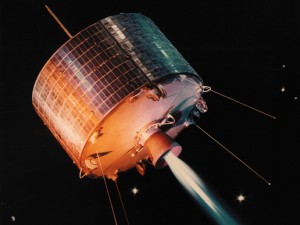
In 1945, science fiction writer Arthur C. Clarke published a paper suggesting that we put satellites in geostationary orbit. 18 years later, America launched Syncom 2. Soon, there will be one more satellite in the Clarke Belt, roughly 26,000 miles above Earth.
On Wednesday, Planetary Resources, otherwise known as the “asteroid mining company,” announced a project designed to “change the way humanity explores the cosmos.”
With NASA’s budgetary woes poised to get even worse if the sequester continues and the recent problems with the Kepler telescope, now seems like a good time to rejuvenate the public’s investment in space, which is the goal of this new project.
In the next couple of years, Planetary Resources will be putting into orbit a prospecting satellite/telescope called ARKYD. But this particular telescope isn’t going to be dedicated to finding gold in them asteroids. Anyone who wants to use the telescope can look for planets, stars, asteroids, or other celestial objects—in other words, people will get to point the thing and see what’s there. It’s not yet clear what else people might be able to use the satellite for, but given that the project is the first of its kind, Planetary Resources seems to be leaving room for it to evolve for, with, and by its users.
While particulars regarding who gets to use the telescope and when have yet to be ironed out, some type of time share between the public and educational institutions will likely be scheduled through Planetary Resources. Schools, students, and researchers working on space-related projects could use the telescope to help develop their own work—they’ll be able to determine, at least in part, what information it harvests. And even though I’m not entirely sure about all of the implications, the geek in me gets excited at the idea of being connected to a satellite. Just as long as there’s no spying….
But Planetary Resources isn’t going to pony up all the money for this. It’s also launched a Kickstarter campaign to raise $1 million for the satellite’s operation. While Zach Braff’s recent Kickstarter foray has raised questions about entities with deep pockets using the site, it makes sense that Planetary Resources would go this route—in fact, it’s been tossing around this idea for a while. Given the astronomic (literally) costs of developing, building, and operating a satellite (estimates are in the hundreds of millions), $1 million is a modest ask. Space is expensive. It costs $71 million each for NASA astronauts to tag along on Russian spacecraft. Virgin Galactic, part of the burgeoning space tourism industry, requires those who want to visit the cosmos to put down a deposit for the full fare—$200 million. This isn’t about us sitting back and watching Guy Laiberte or other wealthy, Earth-weary tourists experience space. This is about marshaling public involvement and ownership. If the public is going to use this satellite, why shouldn’t the public invest in it? Planetary Resources is asking for less than 1 percent of the operating cost, which seems about right. Donating means that we think space is worth not just federal monies, but a little bit of ours, too. Planetary Resources will launch the satellite regardless of what Kickstarter brings in, but why not get some headshots in front of Earth along the way? That’s one perk on offer for those who contribute to the fund.
Unlike any other satellite, ARKYD has the potential to pave the way for a new, revitalized relationship between humans and the cosmos. Clarke would approve.
